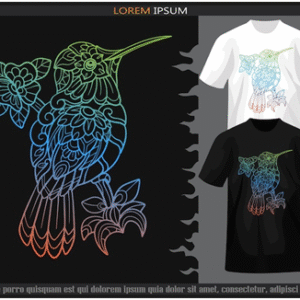The Global Knife Market, valued at USD 4.83 Billion in 2024, is expected to reach USD 6.93 Billion by 2030, growing at a robust CAGR of 6.20%. The knife industry, once considered a niche subset of kitchenware and hardware tools, has grown into a versatile and highly dynamic global market. Today, knives are not merely cutting tools—they represent a fusion of craftsmanship, technology, consumer lifestyle evolution, and multifunctional utility. The rising demand for high-quality culinary knives, growth in outdoor recreational activities, home improvement trends, and innovations in materials have collectively propelled the market into a new era of expansion.
Driven by shifting consumer preferences, increasing culinary engagement, and a surge in specialized applications across diverse industries, the global knife market is undergoing transformative changes. Modern consumers are no longer satisfied with basic utility blades—they seek knives that deliver precision, durability, ergonomic design, and aesthetic appeal. Whether in home kitchens, restaurants, workshops, or outdoor environments, knives have become essential tools that reflect both functionality and personal craftsmanship.
This report provides an extensive overview of market structure, segmental insights, technological advancements, emerging trends, and growth opportunities that will shape the knife market’s future.
Industry Overview
The global knife industry encompasses a broad spectrum of products—from kitchen knives and tactical knives to folding blades, utility knives, ceramic knives, and high-performance steel variants. These products serve a variety of sectors such as:
-
Culinary and foodservice
-
Construction and home improvement
-
Outdoor, survival, and adventure sports
-
Defense and tactical operations
-
Craftsmanship and industrial applications
Over time, knives have evolved from simple functional tools into precision-engineered instruments, with manufacturers integrating advanced metallurgy, ergonomic designs, and smart features. The rise of cooking shows, culinary influencers, and kitchen aesthetics has further elevated consumer interest in premium and specialized knives.
Growth across the market is also strongly influenced by:
-
Increasing restaurant and café establishments
-
Higher consumer spending on kitchen modernization
-
Growing trend of food plating, garnishing, and presentation
-
Rising interest in outdoor activities like camping, hiking, fishing, and survival challenges
-
Expansion of the construction and industrial sectors utilizing utility knives
Download Free Sample Report – https://www.techsciresearch.com/sample-report.aspx?cid=22296
Industry Key Highlights
-
Market Value (2024): USD 4.83 Billion
-
Projected Value (2030): USD 6.93 Billion
-
CAGR (2024–2030): 6.20%
-
Europe leads the global market, followed closely by North America and Asia-Pacific.
-
Fixed blade knives dominate due to their strength and multifunctionality.
-
Folding knives are emerging rapidly, driven by portability and urban consumer demand.
-
Technological innovation in materials—titanium alloys, high-carbon stainless steel, ceramics—is reshaping product design.
-
Culinary advancements, including precision cutting techniques, have increased demand for specialized chef’s knives.
-
Outdoor recreation growth boosts demand for survival, tactical, and adventure knives.
-
Construction and industrial expansion fuels demand for utility and retractable blade knives.
-
Rise of nuclear families and kitchen remodeling contributes to increasing household knife consumption.
Market Dynamics
1. Growth Drivers
a. Rising Culinary Engagement and Premiumization
The global fascination with cooking—fueled by television cooking shows, culinary tourism, social media content, and gourmet home cooking—has greatly elevated the demand for high-quality kitchen knives. Consumers are increasingly investing in:
-
Chef’s knives
-
Santoku knives
-
Paring knives
-
Boning knives
-
Serrated knives
-
Artisan-crafted specialty knives
The emphasis on precision cutting, aesthetic plating, and exotic cuisines is also driving sales of professional-grade knife sets. Premiumization has become a major trend, with consumers prioritizing quality over affordability.
b. Growth of Foodservice and Restaurant Industry
The hospitality and foodservice industries remain major consumers of professional knives. The expanding number of cafés, restaurants, quick-service restaurants (QSRs), bakeries, and catering businesses worldwide continues to boost demand for durable, high-performance kitchen knives.
For instance, large restaurant associations and franchise networks employ millions globally, necessitating continuous procurement of knives for cooking, butchery, food preparation, and service.
c. Technological Advancements in Materials
Advancements in metallurgy and material science have introduced new categories of high-performance knives. Manufacturers are experimenting with:
-
High-carbon stainless steel for superior sharpness retention
-
Titanium for lightweight endurance
-
Ceramic blades for rust-free, ultra-sharp cutting
-
Composite and laminated steels for enhanced durability
-
Smart handles offering improved grip, balance, and safety
These innovations have broadened the market’s appeal among both professional chefs and everyday users.
d. Rise of Outdoor and Survival Activities
The increasing popularity of:
-
Camping
-
Hunting
-
Hiking
-
Fishing
-
Tactical sports
-
Bushcraft activities
has elevated the demand for robust survival and tactical knives. These knives typically feature strong fixed blades, ergonomic grips, multi-function designs, and durability suitable for harsh environments.
e. Construction and Industrial Sector Growth
Utility knives, retractable blades, and cutting tools are essential in industrial, packaging, and construction sectors. They are used extensively for:
-
Cutting drywall and plasterboard
-
Opening packaging
-
Cutting cables and wires
-
Trimming materials
-
Industrial fabrication
As construction and manufacturing industries expand globally, knife demand in this segment is expected to rise.
Emerging Trends in the Global Knife Market
1. Smart Knives and Technology Integration
A significant innovation trajectory involves the integration of smart features such as:
-
Sensors for pressure and sharpness
-
Self-sharpening mechanisms
-
Anti-slip technology
-
Heat-resistant and antibacterial handles
While still at an early stage, technology-enhanced knives are poised to enter mainstream markets in the next decade.
2. Surge in Sustainable and Eco-Friendly Knives
Sustainability is reshaping consumer purchasing decisions. Manufacturers are shifting towards:
-
Recyclable blade materials
-
Biodegradable or eco-conscious handles
-
Sustainable wood and bamboo
-
Reduced-waste production processes
Eco-friendly knife collections are becoming increasingly popular, especially in North America and Europe.
3. Customization and Personalization
Consumers are demanding custom-built knives, leading to increased sales of:
-
Personalized engraving
-
Tailored handle designs
-
Custom blade shapes
-
Bespoke craftsmanship
Artisan knife makers are finding strong demand across luxury markets.
4. Rise of Hybrid and Multifunctional Knives
Knives that perform multiple functions—such as cutting, slicing, splitting, and survival utility—are gaining traction. These are especially popular among:
-
Outdoor adventurers
-
Campers
-
Tactical users
-
Compact-living consumers
Multifunctional knives offer convenience and reduce the need for multiple tools.
5. Social Media Influence and Culinary Culture
Platforms like Instagram, YouTube, and TikTok have boosted global interest in:
-
Gourmet cooking videos
-
Knife skills tutorials
-
Knife-care hacks
-
Aesthetic and luxury kitchen setups
This online exposure has played a significant role in the rising demand for premium kitchen knives.
Market Segmentation
By Type
-
Fixed Blade Knives (Dominant Segment)
Known for reliability, durability, and strength. Widely used in:-
Hunting
-
Camping
-
Tactical applications
-
Professional kitchens
-
Industrial tasks
-
-
Folding Blade Knives (Fastest-Growing Segment)
Preferred for portability and compact design. Popular among urban consumers, travelers, and hobbyists. -
Side Slide / Retractable Knives
Mostly used in construction, retail, packaging, and industrial work settings.
By Material
-
Steel (High-carbon, stainless)
-
Titanium
-
Ceramic
-
Composite materials
-
Specialty alloys
By Application
-
Kitchen
-
Hunting/Survival/Adventure
-
Weapon/Tactical
-
Sports
-
Industrial/Utility
-
Others
By Region
-
Europe – Largest market due to strong outdoor culture and modern kitchen remodeling.
-
North America – Strong presence of foodservice and outdoor activity enthusiasts.
-
Asia-Pacific – Fastest-growing region driven by rising income levels, culinary tourism, and home cooking trends.
Competitive Analysis
The global knife market is highly competitive, comprising a diverse mix of:
-
Legacy manufacturers with decades of craftsmanship
-
Industrial tool companies expanding into high-performance knives
-
Premium culinary brands
-
Artisanal knife makers
-
New entrants leveraging technology and innovation
Leading Companies
-
Olfa Corporation
-
Stanley Black & Decker, Inc.
-
Milwaukee Electric Tool Corporation
-
KA-BAR Knives, Inc.
-
Kai USA Ltd.
-
Hyde Tools, Inc.
-
U.S. Blade Manufacturing Company Inc.
-
Roberts Consolidated Industries, Inc.
-
Apex Tool Group LLC
-
Klein Tools, Inc.
Competitive Strategies Observed
-
Expansion of product portfolios
-
Use of premium and advanced materials
-
Strategic partnerships with culinary institutions
-
Product design innovation
-
Focus on lightweight, ergonomic, and balanced knives
-
Enhanced distribution through e-commerce and retail chains
-
Branding around artisan craftsmanship
Future Outlook
The global knife market is poised for strong expansion through 2030, supported by evolving culinary cultures, technological innovation, and increased demand across industrial and outdoor segments.
Key Future Expectations
-
Greater adoption of high-tech knives with smart features
-
Increase in premium chef’s knives due to gourmet home cooking
-
Growth of hybrid knives suited for compact and outdoor lifestyles
-
Expansion of sustainable knife production methods
-
Rising demand from developing markets, particularly in Asia and Latin America
-
Strong growth in industrial utility and construction knives driven by urban infrastructure expansion
Manufacturers that adapt to shifting consumer expectations—especially in sustainability, ergonomics, and design innovation—are expected to lead market growth in the coming decade.
10 Key Benefits of the Research Report
-
Comprehensive market sizing from 2019 to 2029, enabling informed strategic planning.
-
Insightful segmentation analysis across types, materials, applications, and regions.
-
Identification of key growth drivers shaping market expansion across industries.
-
Detailed competitive landscape review with profiles of leading global manufacturers.
-
In-depth analysis of emerging trends such as smart knives, sustainability, and premiumization.
-
Forecasting of future opportunities to guide investment decisions.
-
Understanding of regional demand variations to support market entry and expansion strategies.
-
Evaluation of challenges and market risks, helping stakeholders anticipate disruptions.
-
Strategic recommendations for manufacturers, distributors, and investors.
-
Support for decision-makers in identifying target segments and growth avenues.
The global knife market continues to evolve rapidly, reflecting broader shifts in consumer behavior, culinary trends, industrial growth, and technological innovation. From premium chef knives to tactical and survival tools, demand is rising across multiple sectors. As advancements in materials and design shape the future of knife manufacturing, companies that prioritize innovation, quality, and sustainability will thrive in this competitive landscape.
The next decade presents substantial opportunities for both established manufacturers and new entrants willing to embrace technology, craftsmanship, and evolving consumer expectations. With growing interest in cooking, outdoor activities, and high-performance tools, the global knife market is set to maintain a strong upward trajectory well into the future.
Contact Us-
TechSci Research LLC
420 Lexington Avenue, Suite 300,
New York, United States- 10170
M: +13322586602
Website: www.techsciresearch.com


